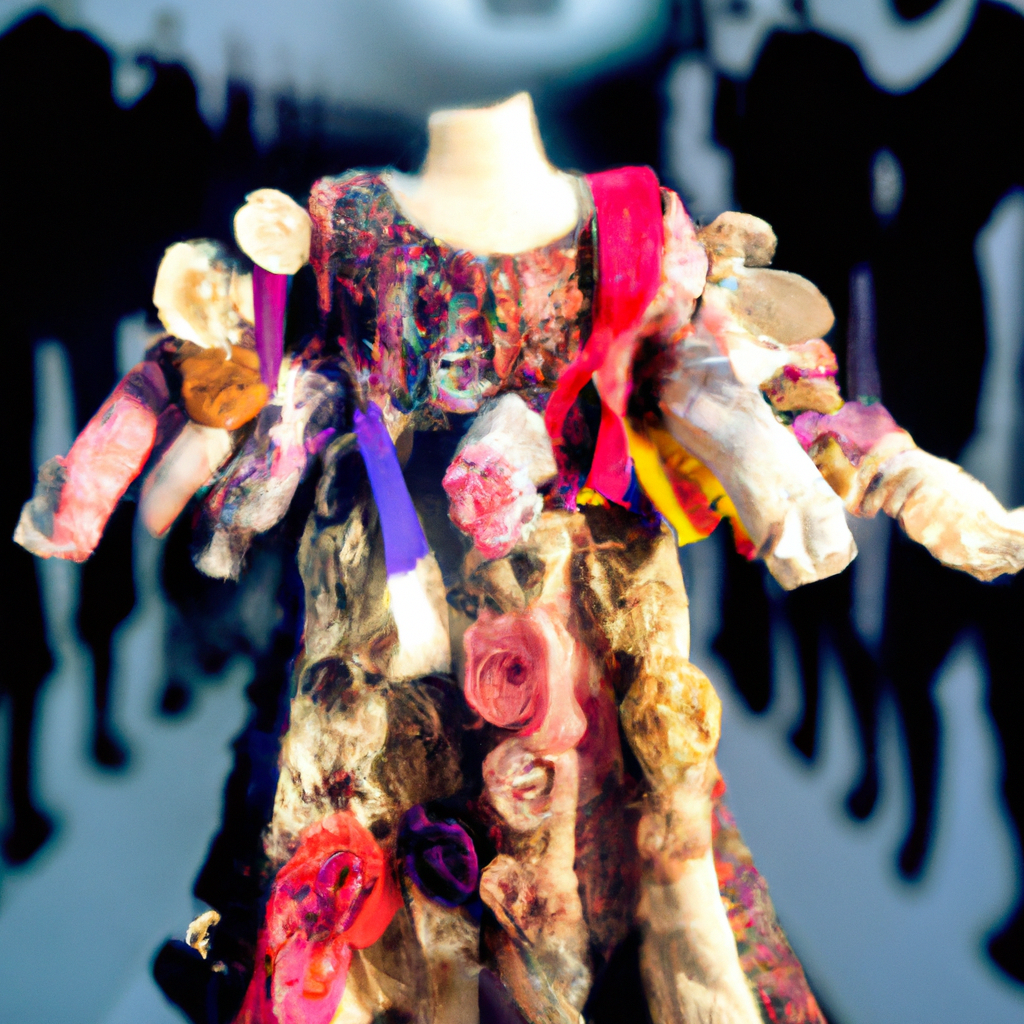For centuries, fashion has been a form of expression that has helped to define cultures around the world. The idea of a “global thread” helps to describe how fashion has been exchanged from culture to culture, influencing the look and expression of different countries. This article will explore the fascinating journey of each culture’s unique fashion, and how it has evolved through generations to become an integral part of today’s fashion landscape.
1. From Dress Makers to Designers: A Look at Global Fashion through Time
For centuries, fashion has been an integral part of the way we express ourselves. From the earliest dress makers to the modern-day global fashion industry, each era has been defined by a new style and way of dressing. Let’s take a closer look at the evolution of fashion, from the first dress makers to the current designers, and see how the industry has changed throughout the years.
Traditional Dress Makers
Throughout history, many countries have their own style or fashion trend which is often indicative of their culture. Primarily made up of dress makers who created garments tailored to their locally available materials, these fashion trends were unique to their locality. Rather than being a force of external influence, fashion was instead a reflection of the lives of those in the area, from the shapes and colors of their dresses to the type of sewing techniques used.
Modern Day Fashion Designers
In the modern era, fashion has become a global phenomenon, with designers from all around the world influencing trends. From established luxury Italian designers to emerging new designers in Japan, the fashion world is a highly diverse and competitive one. With so many different influences, fashion can be seen as a way of expressing our cultural identity and celebrating our differences and uniqueness.
The Impact of Technology on Global Fashion
- easy access to media
- social networks
- online shopping
- 3D printing of fabrics
The rise of technology has had a huge impact on the fashion industry. From easy access to media which provides a platform for designers to showcase their designs, to the rise of social networks and online shopping, technology has drastically changed the way people buy clothes. Technology has also enabled 3D printing of fabric, making it easier to create unique patterns and textures to give the clothes a more personalized look.
2. A Connective Thread: Appreciating the Cross-Cultural Exchange of Fashion over the Ages
Style and fashion have been around for centuries, and throughout that time, there has been a healthy cross-cultural exchange that continues to shape the fashion industry today.
- In the 19th century, Japan’s beloved Ukiyo-e woodcut prints displayed a plethora of kimono clothing, influencing Western dress.
- The flapper movement of the 1920s was heavily influenced by the clothing of Victorian-era England.
- Strikingly bright and patterned decorative clothing originating from the African continent in the 1930s had a lasting impact on high fashion.
In turn, some of the influences have gone the other way. The iconic wrap dress designed by Diane von Fürstberg was heavily inspired by traditional African tribal clothing, which she then adapted for the modern woman. Throughout history, flows of fashion have also gone both ways, with a steady stream of reciprocity between cultural styles keeping the industry vibrant.
Today, there’s no single uniform when it comes to fashion. Instead, we’ve winded up with a healthy mix, with the traditional North American and European mass fashion supplemented by vibrant styles from all over the world. This vibrant mix makes it easy for companies and independent designers to create something fresh, yet familiar.
Cross-border collaborations, such as Gucci’s homage to Korea’s traditional hanbok, are emblematic of the global fashion climate today. We have witnessed high fashion spanning the traditional, the cultural, the exotic, and the futuristic. As fashion continues to evolve, this cross-cultural exchange will continue to bring inspiration and innovation to the industry. The times may have changed, but the transformative power of the cross-cultural exchange of fashion remains.
3. An Fitting Approach: Examining the Practical and Artistic Influences of Global Threads
The world of fashion has seen numerous influences from global threads, both practical and artistic. Across centuries, materials, techniques and designs have shown the impact of the world’s diversity. Understanding these influences can provide excellent insight into the different types of apparel that have been most successful.
Examining the practical influences. Throughout history, apparel has had to meet the needs of those that wear it. This has resulted in a variety of material choices, inspired by locations around the world. Materials such as camel hair from the Sahara, cotton from India and wools from the British islands have all had an impact on fashion. Beyond the materials chosen, practical factors such as weather, climate, and cost of production have lead to differences in designs featured on garments.
Analyzing the artistic influences. The fashion industry has had many artists influence the styles of apparel throughout the centuries. A variety of countries, cultures, and experiences have shaped the aesthetics of clothes. Silk from China has been used to make luxurious garments, while the vibrant patterns found in African prints have had a profound impact on textiles. Furthermore, designers have always looked to the art world for inspiration, from the ancient Egyptians to modern-day Japan.
Putting it all together. Combining the practical with the artistic, patterns and materials have worked together to craft beautiful garments and make them accessible. Taking on traditional and classic elements, creative designers have crafted pieces that marry functionality and fabulousness. Each country, region and era has had variations in apparel design, but using a few crucial guidelines, the proverbial thread of global influence can be traced back throughout history.
Evolving the conversation of apparel. By examining the meaningful influences of global threads, the conversation around fashion has the potential to evolve. Appreciation for a range of materials, techniques and designs can open up limitless possibilities for generations to come.
4. Crafting a Look of Reflection: How Global Fashion has Evolved Us into the Present Day
Global fashion has come a long way since its inception. Bringing people together, creating a sense of unity, inspiring trends, and of course, sparking creativity and expressions. Let’s take a look back at some of the major milestones in fashion that has brought us to where we are today.
From the 1920s flappers glamorizing fringed dresses to the 1960s mod movement celebrating bold prints and colours, the evolution of fashion has never been shy about reflecting the culture of its time. It is fascinating to see how the fashion industry continues to shape the mindset and behaviours of people around the world, no matter the decade.
The turn of the 21st century has been a particularly formative time for fashion as technology-enhanced clothing is making waves in the global market, giving us access to and influence from cultures and trends from across the world literally right at our fingertips.
One of the most remarkable aspects of contemporary fashion is its ability to make space for self-expression. From gender-bending streetwear to the rise of confident plus-sized models on runways, we are living in a time of unprecedented diversity when it comes to fashion. With an improved understanding of how clothing is a way to make a political statement or reflect one’s identity, we have further established fashion as a tool to create social change.
At the same time, it has allowed for amazing collaborations, cross-cultural influences, and exciting new possibilities for bringing style and art together. When we look around at the fashion of the present day, we should take it as an opportunity to reflect on the steps we have taken to get to this point. Whether it’s innovative fabric technology, groundbreaking runway shows or emerging trends, the trials and tribulations of fashion have given us a valid reason to appreciate the current landscape.
The world of fashion has always been and will always be a microcosm of cultural exchange, providing us with the opportunity to express our identity and explore the new. Global threads weave together cultures from across the world, uniting us in a spirit of exploration and expressivity. And, so, the journey continues: boundless, timeless, and ever-evolving.




